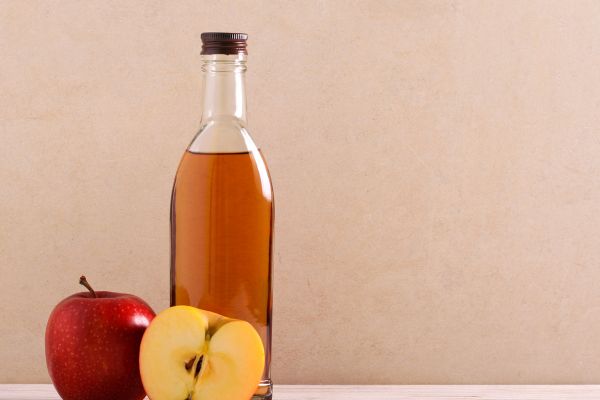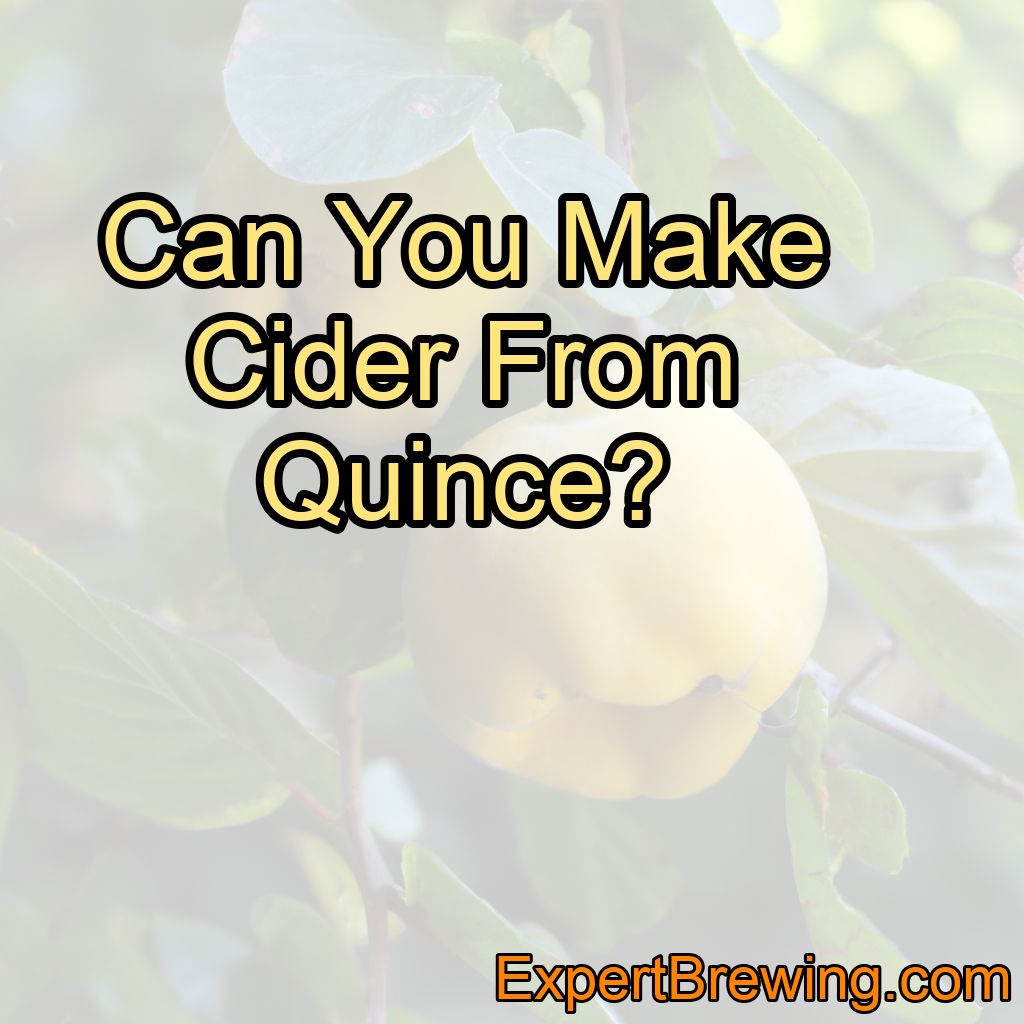Have you ever wondered if you can make cider from quince, either on its own or with an apple or pear base?
The simple answer is yes, you can indeed create a refreshing, unique cider from this often-overlooked fruit.
In this post, I will guide you through the process, share some tips from my personal experiences, and provide insight into this intriguing and flavorful beverage.
The Quince Fruit: An Overview
The quince is a golden-yellow fruit that is somewhat pear-shaped and has a strong, aromatic fragrance. It is a cousin to apples and pears, which explains its similar structure and taste profile.

However, unlike its more popular relatives, quince is not typically eaten raw due to its hard texture and tart flavor. It becomes more palatable when cooked, releasing a sweet, delicate flavor and a pleasant aroma.
Why Quince for Cider
The fact that quince is not commonly eaten raw might make it seem like an unlikely candidate for cider production.

However, its high pectin content and sweet-tart flavor profile make it an excellent choice for cider making. When fermented, the tartness of the quince is mellowed, resulting in a cider with a balanced and unique flavor.
A Step-by-Step Guide to Making Quince Cider
Making cider from quince can be a delightful experience. Here’s a simple guide to get you started:
Ingredients:
- Quinces (10-20 lbs depending on desired batch size)
- Cider yeast
- Sugar (optional, for back sweetening)
Equipment:
- Fruit crusher or juicer
- Fermentation vessel
- Airlock
- Bottles with caps or corks
Procedure:
1. Harvest and Prepare the Quinces:
- Harvest quinces when they are fully ripe.
- Wash thoroughly to remove any dirt and debris.
- Cut away any bad spots and remove the cores.
2. Crushing and Pressing:
- Use a fruit crusher or juicer to crush the quinces and extract the juice using a proper cider press.
- Collect the juice in a clean fermentation vessel.
3. Fermentation:
- Add cider yeast to the quince juice according to the manufacturer’s instructions.
- Seal the vessel with an airlock to allow gases to escape while preventing contamination.
- Allow fermentation to occur in a dark, cool place for 2-4 weeks.
4. Racking:
- Once fermentation has ceased, siphon the cider off the sediment into a clean vessel.
- Leave behind any sediment to ensure a clearer cider.
5. Back Sweetening (Optional):
- If a sweeter cider is desired, add a non-fermentable sugar or sweetener to taste.
6. Bottling and Aging:
- Bottle the cider, leaving a small headspace at the top.
- If carbonation is desired, add a bit of priming sugar.
- Cap or cork the bottles and store them in a cool, dark place for at least 2-4 weeks before enjoying.
Notes on Using Quince for cider:
- Tannin Content: Quinces have a high tannin content which can contribute to a more astringent cider. If a less astringent flavor is desired, consider blending with lower tannin fruits.
- Pectin Levels: Quinces are rich in pectin which can cause a hazy cider. Consider using a pectinase enzyme to break down the pectin before fermentation.
- Hardness: Quinces are a hard fruit and can be difficult to crush. Ensure your crushing equipment is up to the task.
- Astringency: The astringency of quinces can mellow with aging, so consider aging your cider for a longer period if a smoother flavor is desired.
The Apple or Pear Base: A Complementary Pairing
While quince can certainly hold its own in a cider, pairing it with an apple or pear base can enhance its flavor and complexity.
Apples and pears share similar flavor profiles with quince, but their natural sweetness can help to balance out the tartness of the quince.

If you’re using an apple or pear base, it’s best to choose a variety that’s slightly sweeter and less acidic to complement the quince’s flavor.
The Taste: Expect the Unexpected
Quince cider is unlike any other cider you’ve tasted. It has a unique flavor profile that is tart, slightly sweet, and incredibly aromatic. When paired with an apple or pear base, the result is a complex, layered cider that is both refreshing and satisfying. Quince cider is a true delight for the senses.
Health Benefits of Quince Cider
Quince cider is not just a delicious beverage; it’s also packed with health benefits. Quince is rich in vitamins, minerals, and antioxidants, all of which can provide a boost to your health. Drinking quince cider can help to support a healthy immune system, improve digestion, and even protect against certain types of cancers.
Final Thoughts: Embrace the Quince
The quince may be an underappreciated fruit, but it’s a true gem when it comes to cider making. Its unique flavor profile and health benefits make it a worthy addition to any home brewer’s repertoire.
In conclusion, here are ten facts about quince and quince cider:
1. Quince is a golden-yellow fruit that is a cousin to apples and pears.
2. It’s not typically eaten raw due to its hard texture and tart flavor.
3. Quince is an excellent choice for cider making due to its high pectin content and sweet-tart flavor profile.
4. The process of making quince cider involves washing, chopping, boiling, cooling, fermenting, and bottling.
5. Pairing quince with an apple or pear base can enhance its flavor and complexity.
6. Quince cider has a unique, tart, slightly sweet, and incredibly aromatic flavor.
7. Quince cider is a delight for the senses.
8. Quince is rich in vitamins, minerals, and antioxidants.
9. Drinking quince cider can help to support a healthy immune system, improve digestion, and even protect against certain types of cancers.
10. The quince is an underappreciated fruit that is a true gem in cider making.
Personally, I’ve always enjoyed the challenge and reward of making quince cider. It’s a labor of love, but the end result is always worth it. The distinct flavor and aroma of quince cider are unmatched, and it’s an experience I highly recommend to any cider enthusiast or home brewer. So why not give it a try? Embrace the quince, and you might just discover your new favorite cider.
FAQs
Can you make hard cider from any fruit?
Yes, hard cider can be made from any fruit that contains enough natural sugars to ferment into alcohol.
What fruit is cider usually made from?
Cider is typically made from apples.
How to make hard cider from fresh fruit?
To make hard cider from fresh fruit, you’ll need to follow a few key steps. First, choose the type of apples or other fruits you want to use. Next, wash and chop the fruit into small pieces, removing any seeds or stems. Then, press the fruit to extract the juice. You can use a fruit press or crush the fruit and strain the juice through a cheesecloth. Once you have the juice, transfer it to a clean, sterilized container like a carboy or fermentation vessel. Add a suitable yeast strain to the juice to initiate fermentation. The yeast will convert the sugars in the juice into alcohol. Ensure the container is properly sealed with an airlock to allow gases to escape during fermentation. Store the container in a cool, dark place for several weeks, allowing the yeast to ferment the juice into cider. After fermentation is complete, you can bottle the cider and age it for additional flavor development. Remember to follow proper sanitation practices throughout the process to ensure a successful batch of hard cider.
Can you make cider from quince?
Yes, cider can be made from quince fruit.
Can you brew quince?
Yes, you can brew quince.
What is the best fruit to make cider?
The best fruit for making cider is typically apples.




